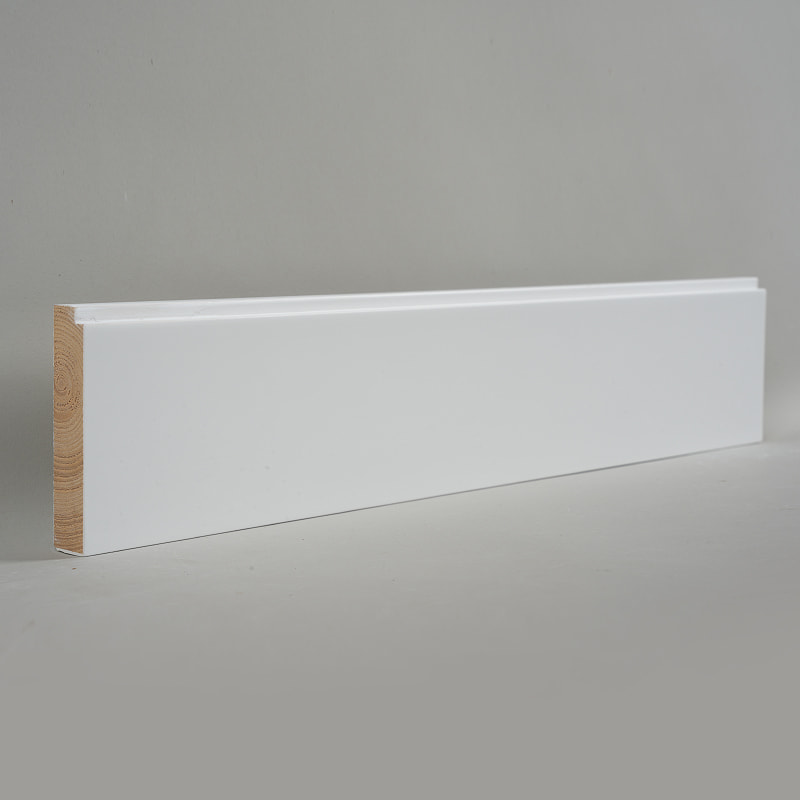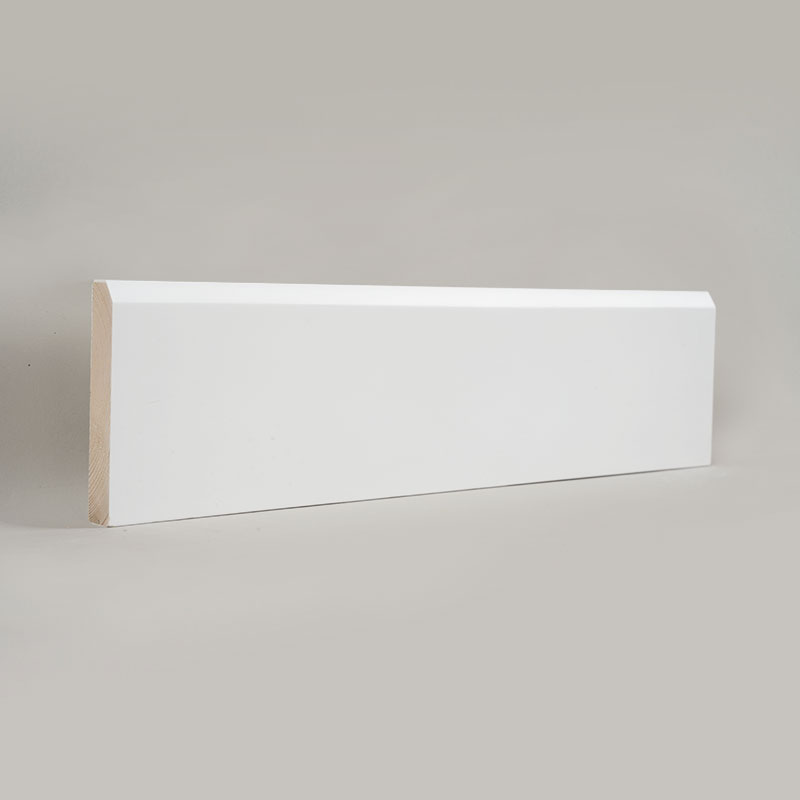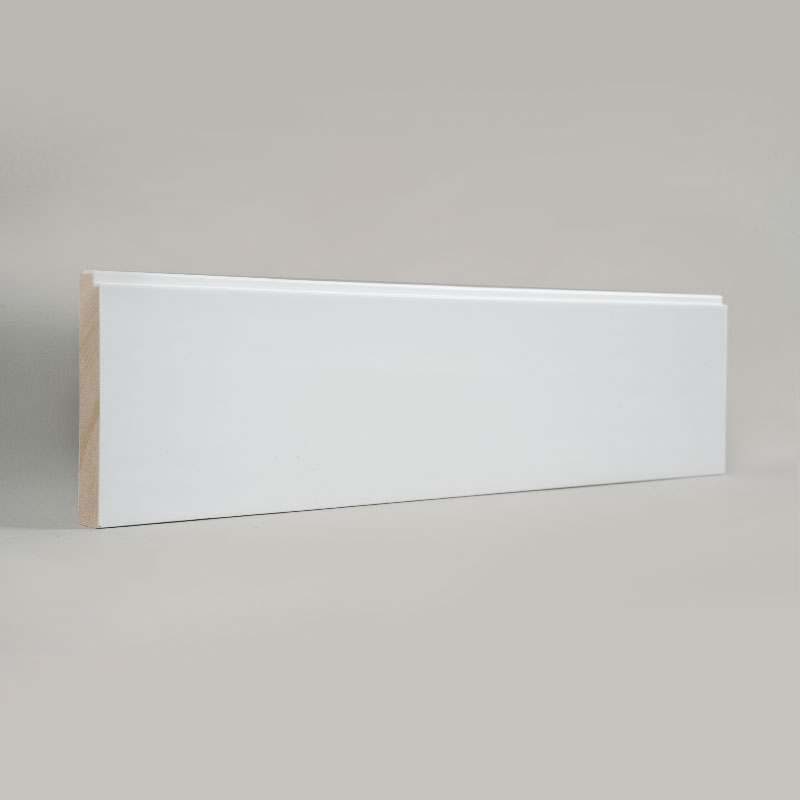Introduction
The role of skirting boards in modern interior design is often underestimated, yet these architectural elements serve both functional and aesthetic purposes. Among the various options available on the market, the white primed skirting board has emerged as a popular choice for homeowners, designers, and contractors alike. Its pre-primed surface allows for easy customization, whether through painting or finishing, offering a perfect blend of convenience and style.
In contemporary homes, skirting boards do more than simply cover the joint between the wall and the floor—they protect walls from scuffs, conceal wiring, and enhance the visual harmony of a room. A well-chosen white baseboard moulding can complement a range of interior styles, from minimalist modern spaces to classic traditional designs.
Understanding Skirting Boards
Skirting boards, also known as baseboards, serve as a transitional element between the walls and floors in any interior space. Their primary function is to protect walls from damage caused by furniture, vacuum cleaners, or foot traffic, while also concealing gaps and wiring. Choosing the right type of skirting board can significantly impact both the durability and the aesthetic appeal of a room.
Among the various materials available, MDF (Medium Density Fiberboard) has become particularly popular for white primed skirting boards due to its smooth surface and ease of finishing. Other materials include natural wood and PVC, each offering distinct advantages depending on the design requirements and functional needs.
Using white baseboard moulding allows homeowners to achieve a clean, contemporary look while maintaining flexibility for painting or staining. Similarly, interior trim skirting plays a vital role in tying together wall and floor elements, ensuring a polished, cohesive appearance.
Material Comparison Table
| Material Type | Advantages | Disadvantages | Recommended Use |
|---|---|---|---|
| MDF | Affordable, smooth finish, pre-primed | Susceptible to moisture | Indoor, dry areas |
| Natural Wood | High-quality feel, can be painted or stained | Higher cost, prone to warping | High-end residential spaces |
| PVC | Waterproof, insect-resistant | Less natural appearance | Kitchens, bathrooms, utility areas |
When selecting a white primed MDF skirting board, it is important to consider both the room’s functional needs and overall design style. For example, modern homes often favor simple, minimalist profiles, whereas traditional interiors may benefit from ornate designs. Additionally, the choice of material affects installation, maintenance, and long-term durability.
By understanding the different materials and how they interact with ready-to-paint skirting boards or easy paint skirting boards, homeowners can make informed decisions that combine both aesthetics and practicality.
Why Choose White Primed Skirting Boards
Selecting the right skirting board can make a significant difference in both the look and functionality of a room. Among the most popular choices is the white primed skirting board, valued for its versatility, ease of installation, and professional finish. Unlike raw or unprimed boards, these pre-coated boards save time during construction or renovation, as they are ready for painting or staining according to the homeowner’s preference.
One of the primary advantages of white primed MDF skirting boards is their smooth surface, which ensures a flawless paint application. This quality is particularly beneficial for easy paint skirting boards or ready-to-paint skirting boards, which are designed to accommodate DIY homeowners or professional painters alike. With minimal preparation, these boards can achieve a polished, uniform finish that enhances the aesthetic appeal of any interior space.
Durability is another key factor. Durable primed skirting boards are treated to resist minor scratches, dents, and moisture, making them suitable for high-traffic areas such as hallways, living rooms, and kitchens. Compared to natural wood, which may require extensive sanding and finishing, pre-primed boards offer a practical solution without compromising on style.
In addition, white baseboard moulding blends seamlessly with most interior styles, from modern minimalism to classic traditional homes. Its neutral color provides a clean backdrop that allows furniture, wall colors, and flooring to stand out. For homeowners who enjoy frequent redesigns or seasonal décor changes, the paint-ready surface ensures they can easily update the look without replacing the boards entirely.
For contractors and designers, choosing white primed skirting boards simplifies project planning. These boards reduce labor costs and installation time while maintaining a high-quality finish. Furthermore, pairing these boards with interior trim skirting and other complementary moldings can elevate the overall design, giving rooms a cohesive and professional appearance.
Popular Styles and Profiles
The style and profile of a skirting board can dramatically influence the overall look of a room. For homeowners and designers seeking both functionality and aesthetics, choosing the right design is as important as selecting the material. White primed skirting boards offer the advantage of versatility, allowing them to complement a wide range of interior styles.
White skirting board profiles vary from simple, minimalist designs to elaborate, ornate patterns. Modern homes often favor sleek, flat profiles that create a seamless transition between wall and floor. In contrast, traditional or classic interiors might benefit from detailed mouldings with curves, ridges, or intricate carvings. These design elements not only add character but also help highlight architectural features within the space.
For DIY enthusiasts or professional designers, understanding the differences in skirting board profiles is essential. Modern home skirting trends favor clean lines, lower heights, and subtle detailing, providing a contemporary feel while remaining practical and easy to maintain. Meanwhile, pre-primed baseboards with decorative profiles can elevate a room’s style, making them a popular choice for formal living areas, dining rooms, or entryways.
Common Skirting Board Profiles Table
| Profile Name | Height (mm) | Style | Recommended Room |
|---|---|---|---|
| Ogee | 120 | Traditional | Living room, dining room |
| Chamfer | 90 | Modern | Bedroom, office |
| Shaker | 100 | Minimalist | Kitchen, hallway |
| Cove | 110 | Classic | Lounge, library |
| Bullnose | 95 | Transitional | Bedroom, bathroom |
When selecting a profile, consider both the scale of the room and the ceiling height. Taller ceilings often benefit from higher skirting boards with more elaborate detailing, while compact spaces may be better suited to simpler, lower-profile designs.
In addition, white baseboard moulding is compatible with various flooring options, from hardwood and laminate to tiles and vinyl. Using ready-to-paint skirting boards with the chosen profile allows homeowners to customize the finish to match wall colors or trim accents, providing a cohesive, polished look.
Installation Guide
Installing skirting boards is a crucial step in achieving a polished, professional-looking interior. While white primed skirting boards simplify the process due to their smooth, pre-finished surface, proper planning and execution are essential for a seamless installation.
Step 1: Measuring and Planning
Begin by measuring the length of each wall to determine the amount of skirting board required. Account for corners, doorways, and other obstacles. Accurate measurements ensure minimal waste and a precise fit. Using a tape measure and a laser level can significantly improve accuracy.
Step 2: Cutting the Boards
Cut the skirting boards according to your measurements. For inside corners, use a coping saw to achieve a tight joint, while outside corners typically require miter cuts at a 45-degree angle. Pre-primed boards like ready-to-paint skirting boards are easy to cut cleanly without splintering.
Step 3: Fixing the Boards
Secure the skirting boards to the wall using nails, screws, or adhesive, depending on the wall type and board material. Durable primed skirting boards are designed to withstand nailing or screwing without cracking.
Step 4: Filling and Sealing
Fill any gaps or nail holes with wood filler or caulk. Smooth the surface using a putty knife, then lightly sand to ensure a uniform finish.
Step 5: Painting and Finishing
Apply a final layer of paint to enhance durability and aesthetic appeal. Choose water-based or semi-gloss paint according to the room’s conditions. Allow adequate drying time between coats.
Step 6: Inspecting and Cleaning
Inspect the installation for any gaps, uneven joints, or scratches. Make necessary touch-ups and clean the boards to remove dust or debris.
Tools Recommended for Installation
- Tape measure and pencil
- Laser level
- Miter saw or coping saw
- Hammer or nail gun
- Adhesive (optional)
- Wood filler or caulk
- Sandpaper
- Paintbrush or roller
Tips for Painting and Finishing
Selecting the appropriate paint and using proper techniques ensures a professional-quality finish. Water-based acrylic paints are ideal for most interiors, while semi-gloss or oil-based paints provide durability in high-traffic or moist areas.
Even though the boards are pre-primed, light sanding and surface cleaning improve paint adhesion. Apply thin, even coats with a high-quality angled brush or foam roller. Allow sufficient drying time between coats.
Recommended Paint Types Table
| Paint Type | Features | Recommended Room |
|---|---|---|
| Water-based acrylic | Fast-drying, low odor, eco-friendly | Living room, bedroom, hallway |
| Oil-based | High durability, glossy finish | High-traffic areas, children’s rooms |
| Semi-gloss | Easy to clean, moderate shine | Kitchen, bathroom, utility rooms |
Proper painting and finishing not only enhance the visual appeal of ready-to-paint skirting boards but also protect durable primed skirting boards from everyday wear and tear.
Maintenance and Longevity
Ensuring the long-term performance of skirting boards requires proper maintenance. Durable primed skirting boards are designed to withstand daily wear, but regular care can significantly extend their lifespan.
Cleaning and Care
Use a soft, damp cloth to remove dust and grime. Avoid abrasive cleaners that can damage the primed surface.
Preventing Damage
- Use protective pads under furniture
- Maintain ventilation in moisture-prone areas
- Inspect for minor cracks or chips regularly
Repair and Touch-Ups
Minor scratches or dents can be repaired with filler and touch-up paint. Replacement of individual panels is simple if necessary.
Combining proper installation, cleaning, and timely repairs ensures that white primed skirting boards continue to enhance both the functionality and aesthetics of a home for many years.
Choosing the Right Skirting Board for Your Home
Selecting the right skirting board involves balancing aesthetics, functionality, and budget. White primed skirting boards offer versatility and ease of finishing, making them suitable for a wide range of interior styles.
Product Comparison Table
| Product Type | Material | Height (mm) | Features | Recommended Style |
|---|---|---|---|---|
| White Primed MDF | MDF | 90/120 | Easy to paint, cost-effective | Modern, minimalist |
| Pre-Primed Baseboards | Wood | 100/130 | High-quality finish, durable | Traditional, classic |
| Durable Primed Skirting | PVC | 80/100 | Waterproof, impact-resistant | Kitchen, bathroom |
Trends and Innovations
Minimalist profiles, sleek lines, and eco-friendly materials are driving modern home skirting trends. Durable primed skirting boards and ready-to-paint skirting boards combine style, functionality, and sustainability. Manufacturers increasingly use low-emission primers and recycled MDF to meet environmental standards while providing durable, attractive skirting boards.
Conclusion
In today’s interior design landscape, the white primed skirting board has proven to be both a practical and stylish solution for modern homes. Its versatility, ease of installation, and compatibility with various paint finishes make it an ideal choice for homeowners, designers, and contractors alike.
Choosing the right material, profile, and finish is crucial for achieving a cohesive and long-lasting result. Durable primed skirting boards provide resilience in high-traffic areas, while ready-to-paint skirting boards and easy paint skirting boards allow for effortless customization. Trends favor minimalist profiles and clean lines, while innovations in materials and eco-friendly practices make white baseboard moulding an increasingly attractive option.

 English
English Español
Español


